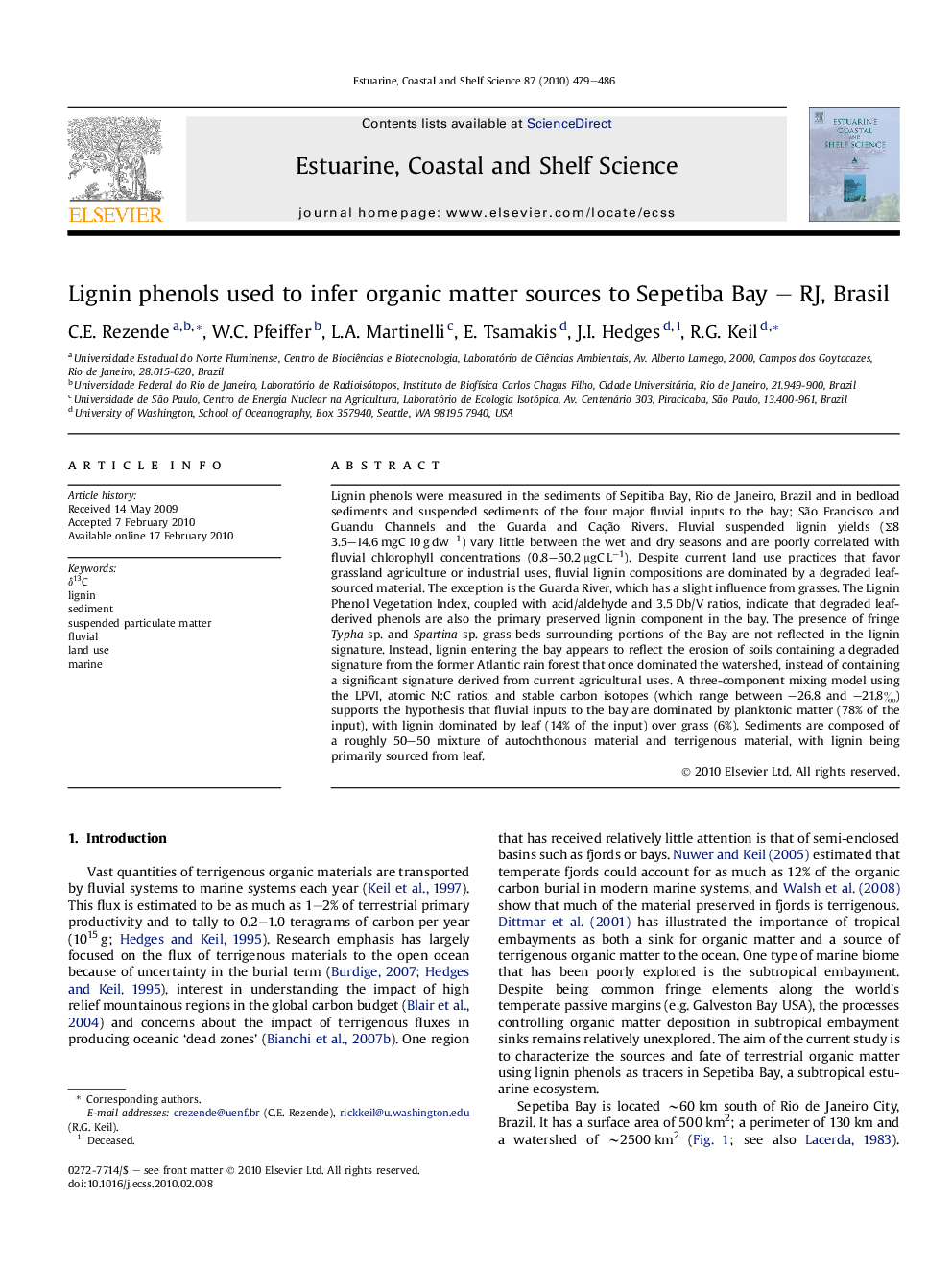| کد مقاله | کد نشریه | سال انتشار | مقاله انگلیسی | نسخه تمام متن |
|---|---|---|---|---|
| 4540935 | 1326699 | 2010 | 8 صفحه PDF | دانلود رایگان |

Lignin phenols were measured in the sediments of Sepitiba Bay, Rio de Janeiro, Brazil and in bedload sediments and suspended sediments of the four major fluvial inputs to the bay; São Francisco and Guandu Channels and the Guarda and Cação Rivers. Fluvial suspended lignin yields (Σ8 3.5–14.6 mgC 10 g dw−1) vary little between the wet and dry seasons and are poorly correlated with fluvial chlorophyll concentrations (0.8–50.2 μgC L−1). Despite current land use practices that favor grassland agriculture or industrial uses, fluvial lignin compositions are dominated by a degraded leaf-sourced material. The exception is the Guarda River, which has a slight influence from grasses. The Lignin Phenol Vegetation Index, coupled with acid/aldehyde and 3.5 Db/V ratios, indicate that degraded leaf-derived phenols are also the primary preserved lignin component in the bay. The presence of fringe Typha sp. and Spartina sp. grass beds surrounding portions of the Bay are not reflected in the lignin signature. Instead, lignin entering the bay appears to reflect the erosion of soils containing a degraded signature from the former Atlantic rain forest that once dominated the watershed, instead of containing a significant signature derived from current agricultural uses. A three-component mixing model using the LPVI, atomic N:C ratios, and stable carbon isotopes (which range between –26.8 and –21.8‰) supports the hypothesis that fluvial inputs to the bay are dominated by planktonic matter (78% of the input), with lignin dominated by leaf (14% of the input) over grass (6%). Sediments are composed of a roughly 50–50 mixture of autochthonous material and terrigenous material, with lignin being primarily sourced from leaf.
Journal: Estuarine, Coastal and Shelf Science - Volume 87, Issue 3, 30 April 2010, Pages 479–486